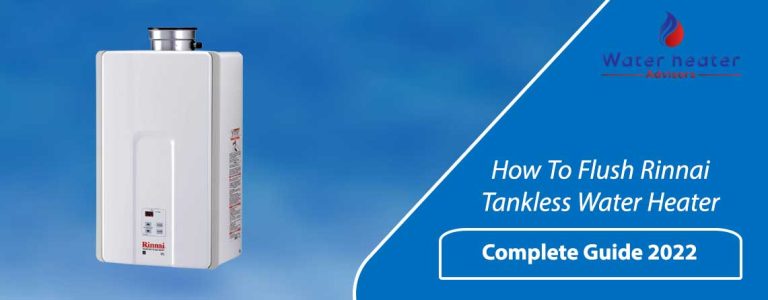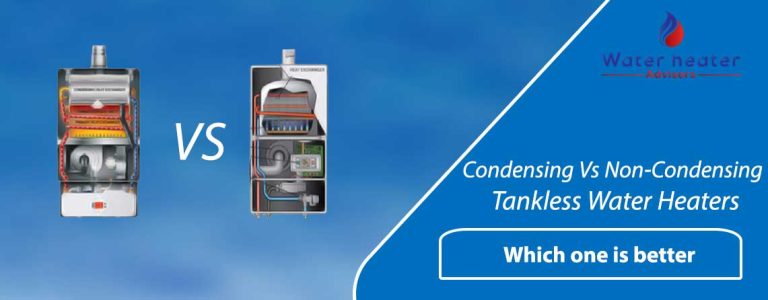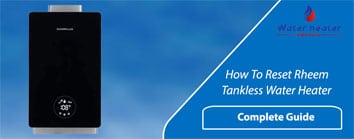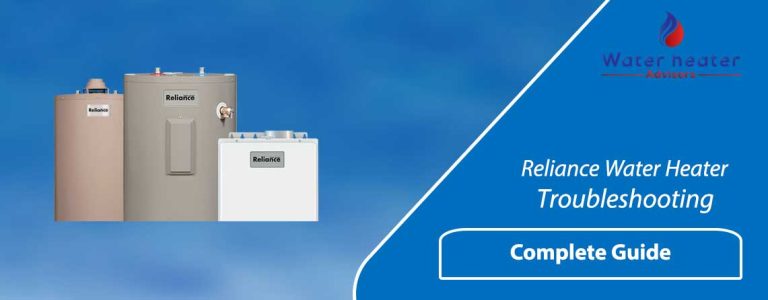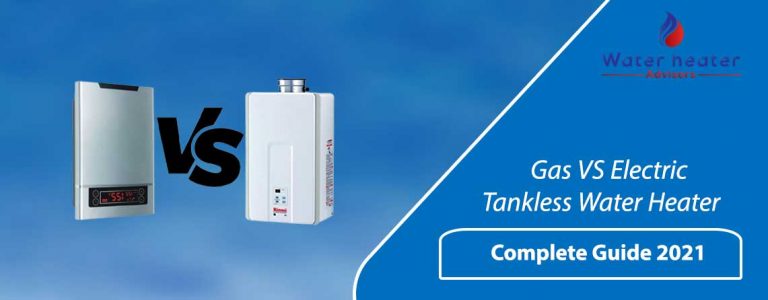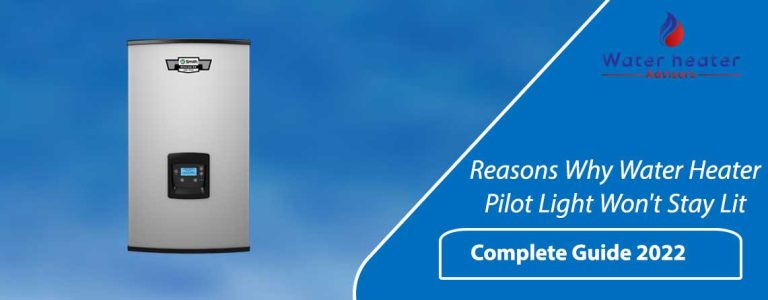What Size Tankless Water Heater Do I Need? A Complete Guide 2021
Are you interested in cutting your power bill in half every year? If yes, deploy a tankless device at each warm water outlet in your residence. These automatic appliances have so many benefits, so it seems crazy not to grab one.
The unlimited hot water, minimum energy consumption, effortless deployment, lower maintenance expenditures, longer lifespan, and extended warranties are some of the biggest reasons to invest in them.
They are becoming progressively famous for domestic and commercial properties. So, you have decided to purchase a tankless appliance—bravo! But have you deliberated on what size tankless water heater do I need?
They are obtainable in two types, gas and electric. On average, gas-powered machines are more energy-efficient and heat water quicker than electric-powered devices.
However, it is critical to install a separate venting system for the gas ones, and they also have a higher initial cost for deployment and plumbing.
On the other hand, electric appliances are quicker to install, but they cannot heat enormous water. They are sufficient for a family of one to three people. Besides, if there are seven to eight people in your home, you should opt for a gas unit.
The sizing plays a vital role when it comes to choosing a new device for your property. A smaller sized heater won’t be able to produce enough warm water to meet your household’s demand.
For instance, you won’t be able to get hot water for showering and washing utensils at the same time. On the other side, if you will get a bigger size, it will spend electricity needlessly.
The size should be appropriate to fulfill your residence’s hot water needs. This article will help you determine the size tankless water heater I need for a family of 5.
What Size Tankless Water Heater Do I Need?
The foremost step in selecting a tankless unit is calculating the size of your heater. When you get a tank storage device, you calculate your family’s size.
However, before buying the tankless unit, you have to figure out the types of hot water outlets or appliances and their quantity. In this way, you will get “GPM” or flow rate, which helps you figure out your heater’s accurate size.
Calculate The Flow Rate
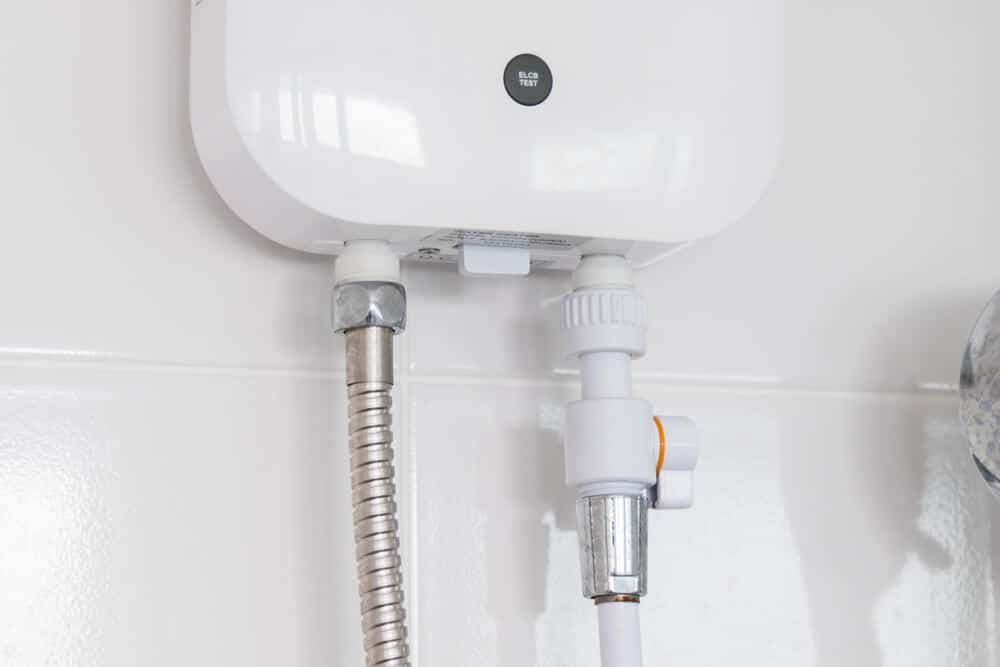
First of all, you have to determine your maximum hot water demand. Add the flow rate of each outlet that utilizes warm water at the same time in your house.
It is an ideal approach to measuring how many gallons of water could flow through the outlet in one minute. It is better to recite the user’s manual provided by your manufacturer to know about the specific flow rates for specific fittings.
Otherwise, you can also search for your appliance’s model number online. Utilize generic gallons per minute number for your type of outlet only if you don’t have the model number and manual.
Search for the GPM estimate charts on the internet to grab this information. You can also search for your “gas tankless water heater sizing calculator or what size tankless water heater do I need for 2 bathrooms?”
For instance, if you want to run one bathroom and one kitchen fixture simultaneously, your required GPM would be:
3 GPM + 2 GPM = 5 GPM
It is quite simple! Make sure to follow these tips before starting to calculate.
- It is vital to reflect on maximum hot water demand at peak hours, such as in the morning or on weekends, to make sure you forever have readily warm water.
- Bear in mind, a product that does not have to function at its maximum capacity all the time lasts for a prolonged duration.
- Moreover, it would be best to plan correctly to decrease the peak demand, such as by taking turns when bathing, allowing the washing machine to do its task when everyone is sleeping or out of the house. You can wash utensils or prepare food before or after showers are done.
- You have to ponder how many bathrooms you have and how many individuals live in your residence. Two folks can run only two showers at once, even if you have four bathrooms in the home.
- Take into account if the device will cater to the whole apartment’s needs or just a few parts of it?
- Remember, the flow rate means total water output, including cold water. Washing utensils with a 2.5 GPM fixture does not mean that all of the water will be warm. You will have to mix both hot and cold water to achieve the desired temperature.
- You can take advantage of the low-flow fixtures to lower the flow rate.
These are the standard flow rates that can help you estimate most of your outlets’ flow rates.
The Size Of Your Apartment Or Home
The tankless heaters come in various sizes. However, almost all the latest units can heat the whole water supply of your property wholly.
Getting a smaller sized product would be inefficient because it will restrict you from steaming the water that travels into specific faucets in your home.
Unlike traditional tanked appliances that permit you to deposit and heat only the amount of water, you want to use. A mighty sized machine can heat a hefty amount of water.
Thus, the size you pick should not be smaller in that it generates a lesser amount of hot water than it takes to fill all your bathrooms.
Determine The Installation Location
They are much smaller than standard heaters because they don’t have tanks. So, you are free to fix them on the wall, floor, or shelf.
Electric appliances are 10-inch high and 7-inch wide, but the gas units are bigger. They are 30-inch tall and 20-inch wide.
As a result, electric models can be installed in tiny spaces, but gas-powered heaters demand adequate space to be hanged. There should be enough space to vent the gases from combustion.
You should opt for an electric device if you don’t have much space to install the heater or area to run the vent pipes in your house.
Figure Out The Required Temperature Rise
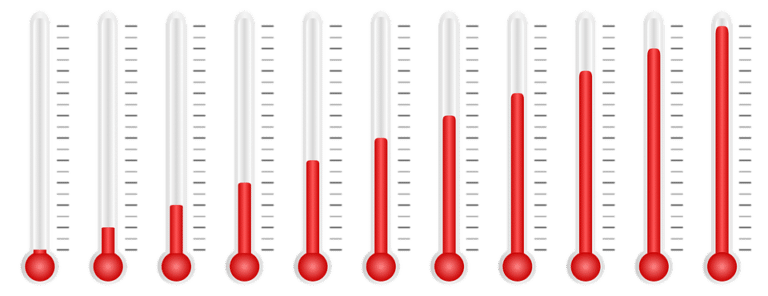
Once you determine the flow rate, house size, and installation location, you must deliberate on how much water needs to be heated. The temperature rise is another calculation.
Different people prefer different temperatures, but the typical one is around 120 degrees F. You can use a thermometer or ground temperature map to know about your location’s average incoming water temperature.
Some listings provide specific temperatures for larger areas, and some provide for smaller regions. The map or listing you want to utilize for determining what size tankless water heater do I need for a family of 4 is just a matter of preference.
It does not matter which method you select; subtract the incoming water temperature from the anticipated warm water temperature.
Desired temperature rise= Preferred output water temperature – Incoming groundwater temperature
Your location plays a significant role when it comes to the average incoming water temperature. If you are positioned in a warmer country in the south, the weather will be higher.
However, if you are located in a colder area, the temperature will be naturally low. This makes a huge difference in how much your device will have to operate to provide you with hot water at the desired temp.
If you are situated in a county where the incoming water temperature is 40 degrees Fahrenheit, and you want the output temperature of 110 degrees Fahrenheit, the temperature rise would be 70 degrees Fahrenheit.
On the other hand, if you live in a region with 70 degrees Fahrenheit and want the output temperature of 110 degrees Fahrenheit, the temp rise would be 40 degrees Fahrenheit.
The ideal output water temperature is between 105 to 115 degrees Fahrenheit for domestic usage. The 105 degrees Fahrenheit is perfect for showering. Besides, 110 degrees Fahrenheit is highly suitable for a kitchen sink.
GPM Heating Basics

The majority of gas-powered devices offer a temperature rise of 70 degrees Fahrenheit or more when 5 gallons of water are used.
Many electric appliances flaunt 70 degrees Fahrenheit when only two gallons of water are utilized. The lesser the water will be used at any given time, the higher the temperature would be.
Your Household Size
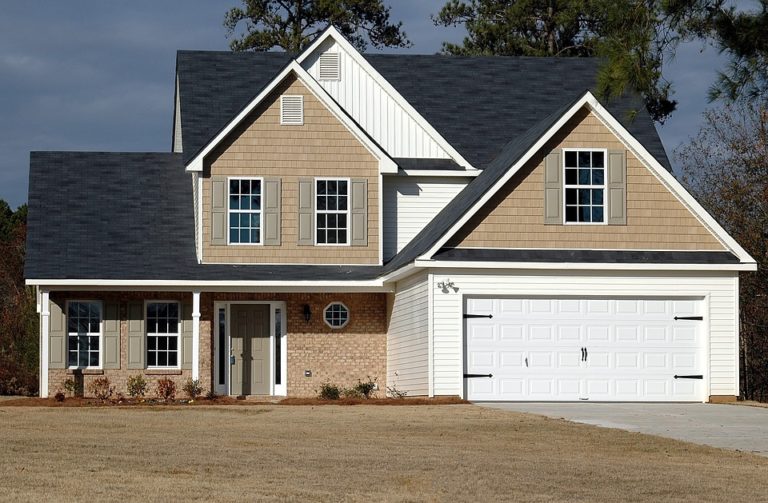
It is another crucial factor that you have to consider before buying a tankless heater for your apartment. It should support occasional uses of warm water running from different fixtures. Additionally, you also have to consider the times of high usage.
All houses have a peak time when they use warm water the most, such as when they have guests over, are planning a birthday or anniversary party, or any other occasion. If these events happen frequently, you should bear it in mind while choosing a tankless machine.
You will not use hot water all the time, but it is imperative to consider when your usage increases. It would be better to use it as a reference point for calculating your new heater’s specifications.
If you want to install it in your office and your usage skyrockets due to multiple activities happening at the same time from different people:
The total estimation is 13.6 GPM, which is way too much than normal usage. Estimating “what size water heater do I need calculator” based on highest simultaneous usage will allow the device to operate efficiently and smoothly during peak hours and regular use.
Determine Your Power Source
The next thing you have to reflect on is the power source for your tankless appliance. It is your personal choice whether you want to purchase gas, propane, or electric heater. Moreover, it depends on your specific circumstances and preferences.
If we talk about electric ones, they are generally well suited for using applications and residences with small water needs. They are perfect for regions with warmer groundwater temperature and smaller heating and gallons of water per minute requirements.
On the other hand, gas units are ideal for larger houses with higher hot water needs. First of all, consider which power source you want to use and available in your region. Does your apartment have access to gas or electricity?
This factor will help you finalize your decision. Many other aspects can help you choose a power source for your device. In many countries, gas prices are much lower than others, so getting a gas heater would be cost-effective in the long run.
If gas and electricity prices are similar in your area, determine which unit attributes are vital. Gas-powered models can produce an enormous amount of hot water swiftly than electric ones.
Furthermore, they are cheap to operate if the gas rates are low in your area. Electric ones are more affordable and more comfortable to deploy because they don’t require a venting system. If you want, you can hang them yourself or hire professional services.
As they are simpler to install, their labor and initial costs will be lower. If your area’s electrical service is inconsistent, we don’t recommend buying an electric unit unless you have a battery backup.
How Efficient Is Your Tankless Machine?
The biggest reason for switching from tank to tankless appliance is that you will never have to worry about venting it. You can hang it in your closet, beneath the sink, or any other place you want.
It is better to mount it in an area with a hefty amount of water being used. For example, it could be a bathtub or any distant area of your property that might need an added lift.
The point of use models is the optimal choice to obtain warm water for the entire home. You can also purchase multiple units if you can afford or have a bigger family.
However, don’t forget to check your temperature rise and required flow rate before investing in a point of use or whole house water heating system. Point of use machines is more popular than whole-house ones.
That’s why; electric heaters are crafted exclusively for point of use applications. You can use them if you have a small family or live in a warmer country.
Gas VS Electric Heater
This is another factor that you have to keep in mind while figuring out what size tankless water heater do I need for a family of 5. Typically, the gas-fired products can produce 5 GPM up to 70 degrees F in 60 seconds.
Besides, the electric ones can generate 2 GPM to 70 degrees F within the same time. Suppose your incoming groundwater temp is 40 degrees F. In that case, the output temperature of 70 degrees F is perfect for reaching a steamy 110 degrees F.
Gas devices are more powerful than electric ones. Power can vary from different models and brands. Before purchasing a product, always go through its specifications, flow rate, temperature rise, energy factor rating, and other essential things.
Energy Factor Rating
While considering what size tankless water heater do I need, you also have to ponder the heater’s energy factor rating. If you are unfamiliar, the units with higher EFT mean they will be more energy efficient.
It is the most significant factor if you want to save a considerable amount on energy bills in the future. Electric devices are more energy smart compared to gas or propane-fired ones.
But, it does not mean that they are affordable to operate. Gas is an inexpensive fuel source currently.
Who Will Deploy The Heater?
Many gas tankless devices arrive with a standing pilot light. Burning continually, it runs off of fuel to keep its flame even. It works when the hot water is not in use either. It is substantial energy wastage.
The only advantage of a tankless unit with a standing pilot light is that it is friendly on your pocketbook. It is better to buy a machine with an intermittent ignition. It will ignite its burner only when the water will start traveling through it.
You have to consider the electrical system, wiring, gas supply size, and many other things before starting the installation process. Switch to a tankless device is undoubtedly costly, but if you are constructing a new house, go tankless to save money right from the start.
As we mentioned above that gas models are a little bit expensive than electric ones. However, it has a lower initial cost if there is not a significant remodeling process involved.
We suggest you get in touch with a professional plumber to do the installation for you. You can do it yourself as well, but if something goes wrong, you won’t be able to take advantage of the warranty. Furthermore, you have to take care of lots of building codes, permits, and laws.
What Is The Difference Between The Maximum Flow Rate And The Realistic Flow Rate?
While reciting the water heater’s specifications, you will witness that they mention the maximum gallons per minute. Practically, the realistic maximum flow rate of the appliance can be much lower.
Why This Difference?
The water is heated at 77 degrees F for measuring the flow rate in GPM. The temperature of cold water available in pipes plays a massive role in this regard.
If you live in Texas, the inlet water temperature will be around 77 degrees F. However, the inlet water temp in Minnesota will be approximately 37 degrees F.
Your tankless machine will have to overcome the massive difference of 40 degrees F to provide you with perfectly heated water.
Example:
Suppose you have a unit that features a maximum flow rate of 10 gallons per minute. In a warmer area, the heater can quickly provide you 10 GPM of 110 degrees Fahrenheit because the cold water temperature is 77 degrees Fahrenheit. The heater will have to overcome the difference of 33 degrees Fahrenheit.
On the other side, the inlet water temperature in a colder region is 37 degrees Fahrenheit. The device will have to overcome the difference of 73 degrees Fahrenheit to heat water to 110 degrees Fahrenheit.
Frequently Asked Questions
What Size Tankless Water Heater Do I Need That Last Longer?
Size has nothing to do with the durability of the heater. You have to consider its type to know how long it will last. Gas units tend to have a longer life than their electric counterparts.
However, the manufacturer and model also have a significant impact on the unit’s lifecycle. Usually, gas appliances last for up to 20 years, and electric ones last for 7 to 10 years.
What Size Tankless Water Heater Do I Need For My House?
It is nearly impossible to tell. It relies on how many bathrooms and total hot water fixtures or appliances you have in your property and your anticipated temperature rise.
Make sure to read our guide carefully or take advantage of the “gas tankless water heater sizing calculator” to get the answer to your query.
What Size Of Unit Can I Deploy Myself?
We don’t recommend installing it yourself because it involves many technical and plumbing tasks that only a professional can handle competently.
The deployment procedure can be complicated for a newbie. You will have to deal with the electrical system, propane units, gas connections, and many other things.
Conclusion
Are you still questioning, “What size tankless water heater do I need for 2 bathrooms?” Luckily for you, we have everything you need to complete the task yourself without seeking help from a plumber.
After reading our handy guide, we are sure that you will calculate the water flow rate, the required temperature rise, and energy efficiency levels effortlessly. If there are still any queries, don’t hesitate and get in touch with us.


